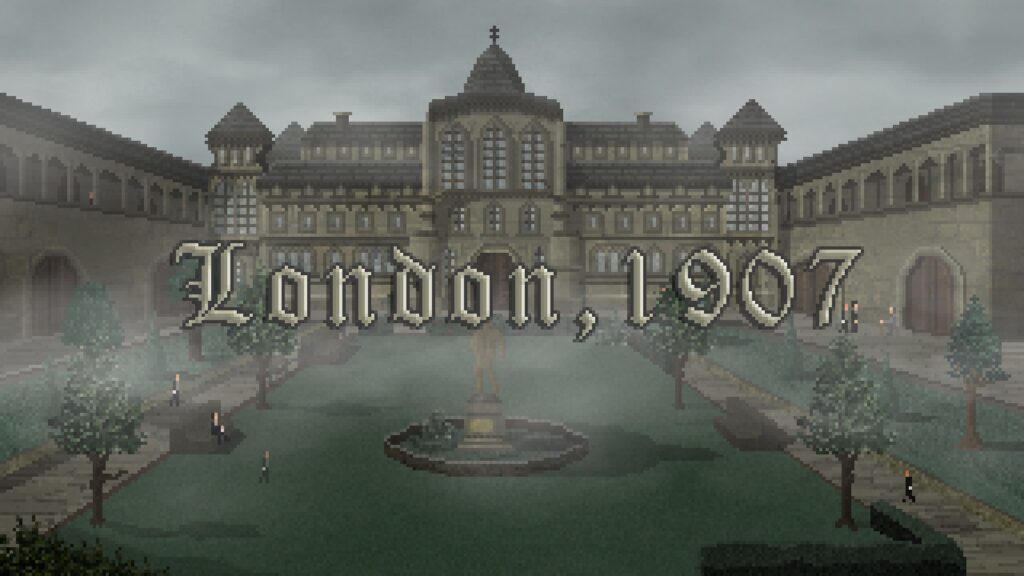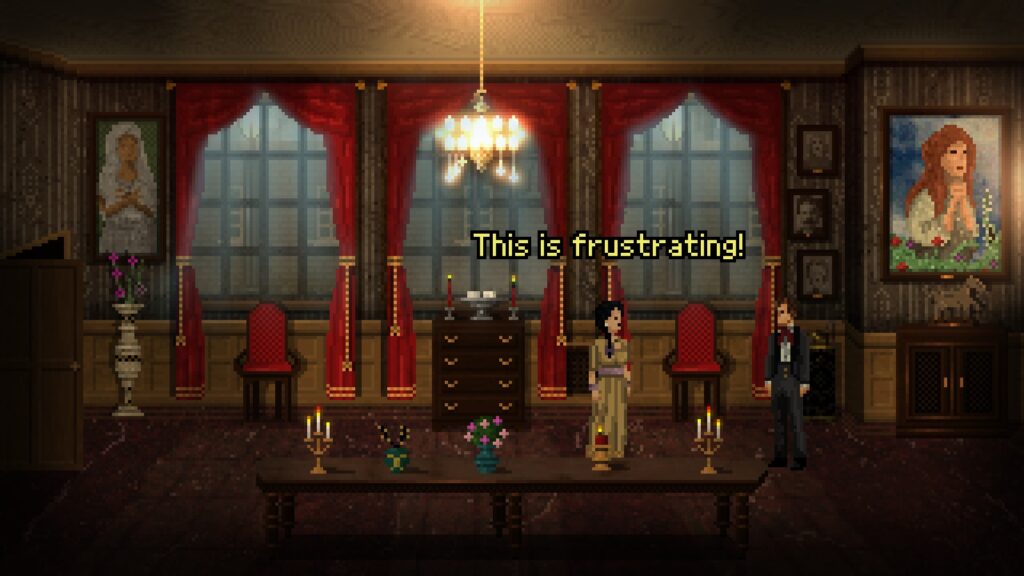An English Haunting wants to have its cake and eat it, too. Sadly, it doesn’t work that way.
Perhaps due to the games of my childhood, perhaps due to the age of Flash where point-and-click adventures abounded, or perhaps due to the early iPad games I enjoyed, I have a soft spot for adventure games. Not quite visual novels and not quite true mysteries, point-and-click adventures allow for low-budget, high-impact storytelling. It’s difficult for me to articulate where An English Haunting goes wrong in this endeavor, but I think there are three aspects which bothered me.
The first (and probably least relevant) are the anachronistic viewpoints of its characters. Despite being set in 1907, our main character has a remarkably modern sensibility. This wouldn’t be a problem by itself, but the rest of the world seems to remain much as it actually was – meaning our protagonist feels less like an early 20th-century British professor and more like someone that got dropped into the setting from the current day.
The second, and far more consequential, issue stems from the way the narrative unfolds. This is the part I have the most trouble describing, so I’ll have to rely on anecdote: there were constant times where clicking on something would do either too much or too little. I’d click on a lamp and the character would break some glass, get a key, then dispose of the glass with no input. Then later, I’d click on a step-stone and the character would talk about how to use the stone to climb…but not actually do it. This leads to a disconnect between the story and actually feeling like you’ve “solved” the problem. As the game goes on, the actions you can take become much more limited, leading to a feeling that these are less puzzles and more just big “next scene” buttons.
Finally, the environments and dialogue are at once a bit too cluttered and yet also not deep enough. Each environment has many things which you can look at, but very few interactions happen on each screen. Characters talk at length about one thing not being evidence enough, only to later jump to remarkable conclusions about the fate of someone that disappears despite having no previous experience with the phenomenons which caused it. A mysterious cult shows up, tries to murder you, then never shows up again. A glint on a hilltop is dismissed as inconsequential despite being the only important thing on the screen until you do just the right thing (admittedly, this flaw can be found in a lot of adventure games).
I finished the game (in about four hours) not because it truly engaged me but because I kept thinking that there must be something more and didn’t want to discount that there might be some great twist at the end. Sadly, though there are a couple enjoyable moments throughout the run time, I can’t say it was worth the time. Tier Three.


